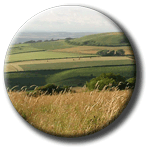SAC
Special Area of Conservation
T
here are 608 SACs in the United Kingdom (August 2007). SPAs ,
and SACs together form a network of protected sites across the EU called "Natura
2000". Compared with other designations SACs tend to be large, often
covering a number of separate but related sites, and sometimes including
areas of developed land. In fact, the boundaries of some SACs are not very
clearly defined, and some are still under discussion. Unlike other designations,
SACs can stretch beyond the low tide mark into the marine environment. In
fact, some are almost all marine in extent.
,
and SACs together form a network of protected sites across the EU called "Natura
2000". Compared with other designations SACs tend to be large, often
covering a number of separate but related sites, and sometimes including
areas of developed land. In fact, the boundaries of some SACs are not very
clearly defined, and some are still under discussion. Unlike other designations,
SACs can stretch beyond the low tide mark into the marine environment. In
fact, some are almost all marine in extent.
Because the EU threatened to take legal action against the UK
on the grounds that insufficient areas were designated it is likely that some
extra SACs will be designated in the UK in the future.
Almost all UK SACs are based on SSSIs
(although SSSIs cannot extend beyond low tide and SACs can). In planning law,
they are effectively afforded the highest possible protection.
The extent to which this new(ish) designation is heeded varies
greatly. In theory, SACs have a very high degree of protection - certainly
higher than a SSSI. A key difference is that for an SSSI, planning authorities
have considerable discretion to decide whether or not an application will
affect a site, and act accordingly. For an SAC, by contrast, if as a result
of an application there is 'likely to be a significant effect' on the designated
features of the SAC (i.e. almost anything, including things not within the
boundaries of the SAC and the cumulative effect of several separate applications)
then the planning authority must obtain an 'appropriate assessment' of the
application and its likely effect. However, only if there is 'likely to be
a significant effect' on the designated features of the SAC is an appropriate
assessment required. This is important, as the features of many SACs represent
only a small proportion of the wildlife within the SAC - this is particularly
the case for single species sites. Creating an 'appropriate assessment' invariably
includes taking the advice of the appropriate government agency (eg Natural
England), and to ignore such advice a planning authority would need to have
some very strong reason. Unless this assessment shows that the application
is utterly benign then the freedom to accept an application is much more
constrained than it is for SSSIs. However, in practice this has sometimes
not been strictly enforced, sometimes apparently because of ignorance on the
part of the planning authority and even government agencies.
 The
whole process is very complex, and much of it has not been tried and tested.
In particular, as there are few such applications and the SAC designation is
of relatively recent origin there are few historical decisions to refer to
to make comparisons when planning applications affect an SAC. The result of
this is that decisions can be slow, often controversial, and hard to predict.
This creates some
difficult problems almost anywhere where an SAC is affected or potentially
affected by development.
The
whole process is very complex, and much of it has not been tried and tested.
In particular, as there are few such applications and the SAC designation is
of relatively recent origin there are few historical decisions to refer to
to make comparisons when planning applications affect an SAC. The result of
this is that decisions can be slow, often controversial, and hard to predict.
This creates some
difficult problems almost anywhere where an SAC is affected or potentially
affected by development.
Natural
England  is the body responsible for advising on SACs in England. The bodies responsible
for advising on SACs in Wales and Scotland are the Countryside
Council for Wales
is the body responsible for advising on SACs in England. The bodies responsible
for advising on SACs in Wales and Scotland are the Countryside
Council for Wales and Scottish Natural Heritage
and Scottish Natural Heritage  respectively.
respectively.
The EC Habitats Directive (92/43/EEC) (Directive on the Conservation
of Natural Habitats and of Wild Fauna and Flora) agreed at the Environment Council
in December 1991 was adopted in May 1992. Each member state must compile a list
of areas containing the habitat types and species listed in the Directive. These
areas are to be protected for the purpose of conserving Europe's rarest flora
and fauna species and habitat type; and may be designated both on land and at
sea. Most are likely to be drawn from the existing SSSI network. Most of these
areas will in due course be designated as Special Areas of Conservation (SACs),
to ensure that they are protected from deterioration and damage.
The EU Habitats Directive (Directive on the Conservation of
Natural Habitats and of Wild Fauna and Flora), 1992 complements the EU Directive
on the Conservation of Wild Birds and covers species other than birds. Habitats
and species of "community interest" are identified, according to
certain criteria, and these must be maintained at "favourable conservation
status",
again as specified by particular criteria. The mechanism for protection is
through designation of Special Areas of Conservation (SACs), both for habitats
and for certain species. There are also measures for the protection of
certain species which were not previously protected by other legislation. The
legal instrument for implementing the Directive in the UK is the Conservation
(Natural Habitats,
&c.) Regulations, 1994. These provide (a) for the protection of species
listed in the Habitats Directive, and (b) for the conservation of habitats,
namely the SACs designated under the Habitats Directive and the SPAs designated under the Birds Directive. As noted, this protection could be somewhat
stronger than that afforded to SSSIs,
particularly as regards existing planning permissions. Conservation bodies
have pointed out loopholes, however, in both species and habitat protection.
Further changes are likely, so check the latest position if it's important
to you.
designated under the Birds Directive. As noted, this protection could be somewhat
stronger than that afforded to SSSIs,
particularly as regards existing planning permissions. Conservation bodies
have pointed out loopholes, however, in both species and habitat protection.
Further changes are likely, so check the latest position if it's important
to you.

 The
whole process is very complex, and much of it has not been tried and tested.
In particular, as there are few such applications and the SAC designation is
of relatively recent origin there are few historical decisions to refer to
to make comparisons when planning applications affect an SAC. The result of
this is that decisions can be slow, often controversial, and hard to predict.
This creates some
difficult problems almost anywhere where an SAC is affected or potentially
affected by development.
The
whole process is very complex, and much of it has not been tried and tested.
In particular, as there are few such applications and the SAC designation is
of relatively recent origin there are few historical decisions to refer to
to make comparisons when planning applications affect an SAC. The result of
this is that decisions can be slow, often controversial, and hard to predict.
This creates some
difficult problems almost anywhere where an SAC is affected or potentially
affected by development.